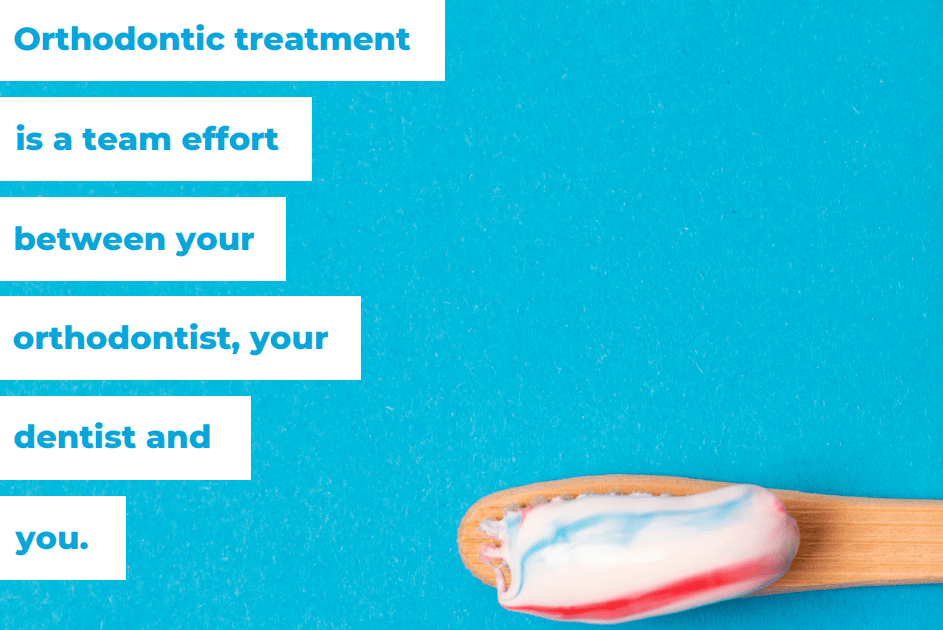Oral hygiene during orthodontic treatment
8 September 2022 | By Dr. Eric Meyer
 What we love about orthodontics is we have the ability to transform smiles and in doing so improve the lives of our patients. Part of achieving our goal for a healthy, stable, functional, and esthetic smile is good oral hygiene from patients. Although, we deliver the treatment we can’t do it without your help!
What we love about orthodontics is we have the ability to transform smiles and in doing so improve the lives of our patients. Part of achieving our goal for a healthy, stable, functional, and esthetic smile is good oral hygiene from patients. Although, we deliver the treatment we can’t do it without your help!
As you may have guessed, braces make cleaning your teeth a little more difficult. This is why we want our patients to have excellent brushing and flossing habits. Every patient receives oral hygiene instruction at the start of treatment and continuous feedback on how they are doing with cleaning their teeth throughout treatment.
What we aim to avoid are white spot lesions and cavities during treatment. White spots are the first signs of the weaking of the outer layer of the tooth due to plaque buildup from poor oral hygiene. Plaque loves to accumulate around the brackets and especially at the gumline, making it extremely important to brush all surfaces of your teeth, as well as along the gumlines. White spot lesions are extremely difficult to correct and may even be irreversible if large enough. With continued poor brushing and flossing habits, the white spots eventually turn into cavities, which need to be fixed by your dentist.
Keys to doing your part
- Continue seeing your dentist every 3-6 months for regular check ups and cleanings.
- Brush after eating and drinking (unless it is water). If you do not have access to a toothbrush we recommend at least rinsing with water or a mouthrinse. We have travel toothbrushes at our office, so don’t hesitate to ask for one! This or a small bottle of mouthrinse will be very easy to store in a backpack or locker at school. For both toothpaste and mouthrinses, look for Fluoride on the bottle–this ingredient is great for strengthening your teeth and preventing cavities.
- Floss after once a day using floss threaders or floss picks made specifically for patients with braces. Another great tool is a Water Pik, a small handheld device in which you direct a stream of water to rinse around the brackets and wires. We highly recommend these for patients with orthodontic appliances that are fixed, such as expanders, pendulums, herbst, and more.
- Avoid sugary, crunchy, sticky, chewy and hard foods such as caramels, taffy, hard candy, popcorn, pizza crusts, nuts, etc. Eating ice, chewing on pencils or pens and biting into whole apples can cause damage to your appliances. Avoid sugary beverages as if possible and brush or rinse after consumption.
- Compliance is key. With your help with appliances, rubberbands, appropriate diets, and taking care of your teeth and gums your treatment will go much quicker!
Lastly, for patients in clear aligner therapy, such as Invisalign, oral hygiene is just as important as with braces. What makes this treatment modality great is that you have the ability to remove the clear trays to easily floss and brush. However, patients must always brush before replacing the trays, otherwise they will trap everything under the trays. As the clear aligners cover every surface of your teeth this is easiest way to get cavities during treatment.
At the end of the day we want you to have a healthy, stable, functional and esthetic smile. However, we don’t want to do that at the cost of destroying teeth with cavities! So do myself and yourself a favor and keep those pearly whites clean before, during, and after treatment! For questions about oral hygiene feel free to come to our office, call us, and visit our resources web page.
-Dr. E
